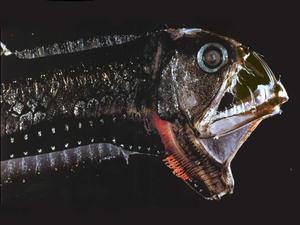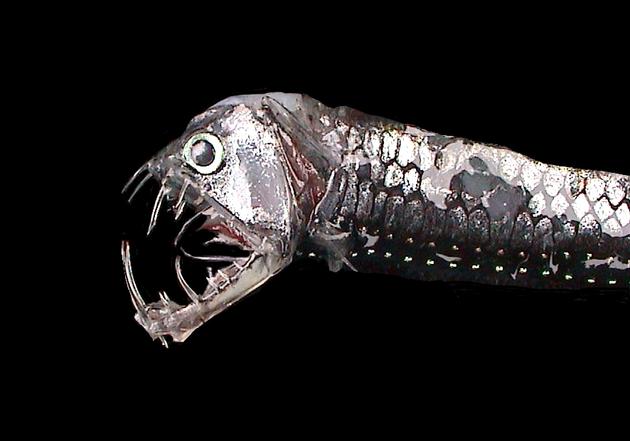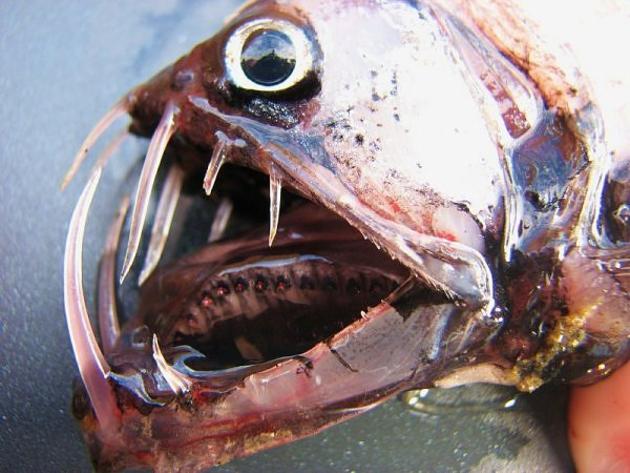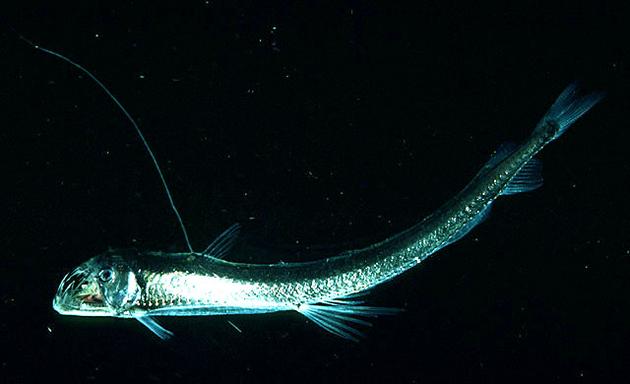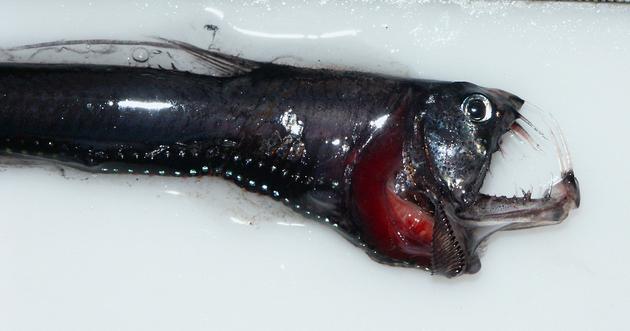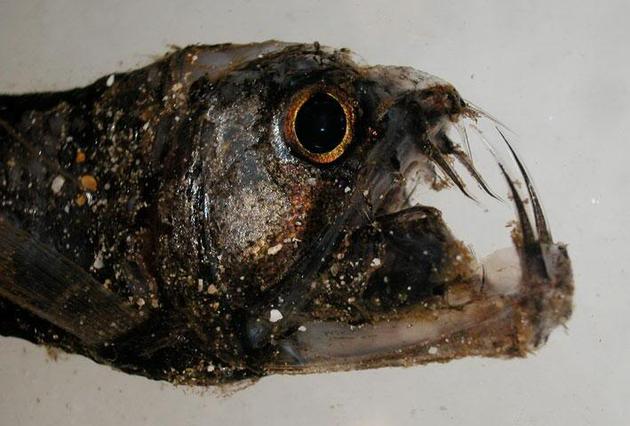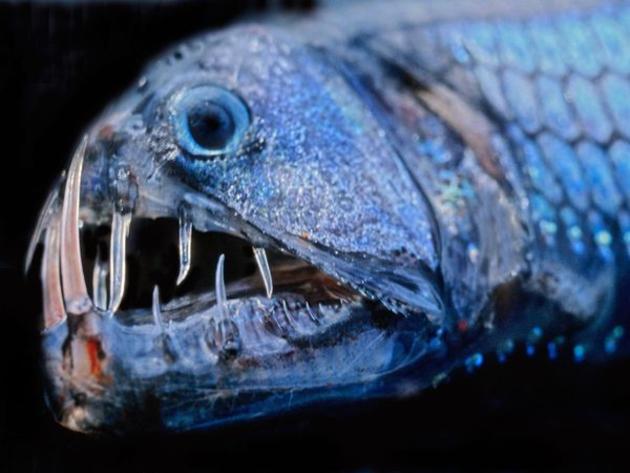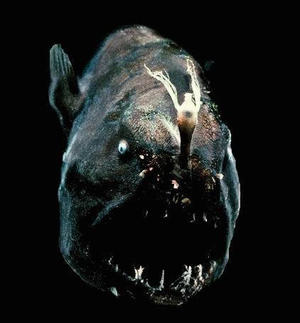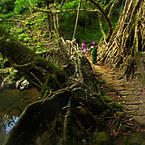A Rare Deep Sea Predator – Viperfish
Jul 4 2011
Some of the deepest parts of our planet are a home to rare species like the Viperfish. Earlier we did a post about other species that live at great depths in the Marianas Trench, you should check it out also!
Due to its ellusive lifestyle, scientists have been unable to record exact figures of this species. It is estimated that the Viperfish can live anywhere between 30 and 40 years in the wild. A specimen in captivity has a significally shorter lifespan – only several hours.
Time of day greatly effects the depth these species stay at. In the daytime, Viperfish prefer to be at lower depths (up to 9,000 ft) to avoid any direct sunlight. During the night, Viperfish have been spotted by scientists in shallow waters.
A Viperfish varies in colour; so far scientists have found green, silver and black coloured fish. A very distinctive feature of this fish is its massive, fang–like teeth that it uses for immobilizing prey. They are so large that they actually go out of the mouth and are always visible.
The first vertebra behind the head of the Viperfish is known to absorb the shock of its attacks, which are mainly targeted against Dragonfish and other small creatures. They are able to undergo long periods with scarce or no food.
Because of the extreme depths at which they are found, very little is known about the reproductive habits of the Viperfish. A very fact to take note of is that human activity on this planet has very little impact on these species due to their separation from us.
Share this post:
Like our Facebook page & receive daily updates on your wall:
You May Also Like
Deep Dwellers - Marianas Trench
May 12 2011
Check out some of the creatures that live at the deepest part of our planet. These images were taken on one of the most recent dives into the trench (2008). There has been only 3 dives down (two unmanned and one manned), which makes these images a very rare sight.
